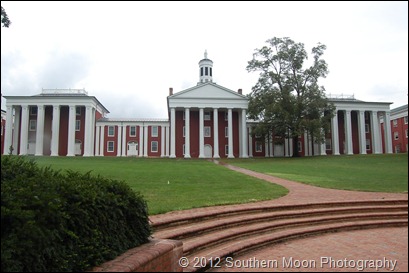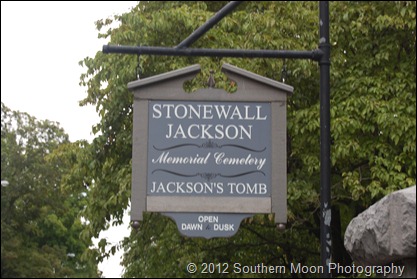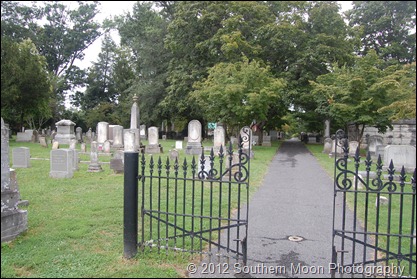Continuing our day in Lexington, Virginia, our next stop was Washington and Lee University. Nestled in the hills of Lexington, this beautiful campus sits atop the hill next to the Virginia Military Institute’s campus.
Despite the overcast skies and looming storms, this was a beautiful campus to walk around. It was founded in 1749 and was first named Augusta Academy and went through a move and several name changes, but when native son General George Washington stepped in to help save this all male school in 1796 with its first endowment, it was later renamed Washington College out of gratitude for his generosity. By then, the College was in its present-day location of Lexington.
This private, liberal arts school sits between the Blue Ridge and Allegheny Mountains and is the 9th oldest school of higher learning in our nation. Virginia’s other native son, General Robert E. Lee became President of the College in 1865 and worried that his leadership in the Confederacy could bring hostility towards the school. He said that “it was the duty of every citizen in the present condition of the Country, to do all in his power to aid in the restoration of peace and harmony.” Following Lee’s death in 1879, the Board of Trustees voted to change the name of the college to Washington and Lee University. It wasn’t until 1972 when women were first admitted to its Law School and undergraduate women were admitted in 1985.
Lee Chapel is where General Lee and his beloved horse, Traveller are buried. We were disappointed that photography is not allowed inside the chapel or the museum, but did enjoy the small collection that is there. If you know in advance that you will be there, you can request express written permission from the University, but there are severe restrictions and limited allowances for use of the photos.
When you walk into the chapel’s foyer, you have an entrance on either side. Rows of white pews lining both sides, the middle and the surrounding balcony up above seats 500. It is still used today for the University’s most important events, such as concerts, lectures and other activities. Just whispering to each other, my husband and I could tell that the acoustics are absolutely wonderful in this Chapel. (One cannot walk into this Chapel and not whisper! It just isn’t right to speak loudly in there!) General Lee’s favorite pew is marked with a plaque and shows that the General enjoyed sitting right up front!
At the front of the chapel behind the wooden stage, nestles the monument of a reclining General Lee, without his sword at the request of his beloved wife. You may think that he is interred at this very spot, but he is not. You have to take the narrow, winding stairs downstairs to the crypt where General Lee and several of his family members are buried. Also downstairs is a small museum and gift shop. Traveller’s grave is just outside the door as you exit.
Our last stop was for another Confederacy General, who happens to be one of my husband’s favorite civil war historical figures. He is General Thomas “Stonewall” Jackson. A professor at Virginia Military Institute (VMI), he is also buried here in Lexington. Set right on the main street, leading into town, the wrought iron fence points the way to the tomb of Stonewall Jackson.
Thomas “Stonewall” Jackson, Confederate General, is one of the most well-known officers of the Confederacy after General Robert E. Lee. He was considered to be one of the best tactical commanders in the history of our great nation. He was a graduate of West Point and from there served in the Mexican-American War from 1846 to 1848. It was during that time he first met Robert E. Lee. It was at Bull’s Run that General Jackson earned his nickname, “Stonewall”. Crumbling under heavy Union assault, the Confederate lines were lucky to have General Jackson’s brigade there to provide crucial reinforcements stoically demonstrating the discipline that he had instilled in his men. Brig. General Elliott Bee, Jr. inspired his men to re-group by shouting out that there Jackson stood like a “stone wall” and to rally behind the Virginians. Despite the controversy that followed the intent of the statement, General Jackson was forevermore known as “Stonewall” Jackson.
We were able to take a few more photos of this serene corner of Lexington. We didn’t walk all around the cemetery as there was a service in session. It is a beautiful place for so many who have been laid to rest here.
Thank you, Lexington for such a nice afternoon filled with so much history!









